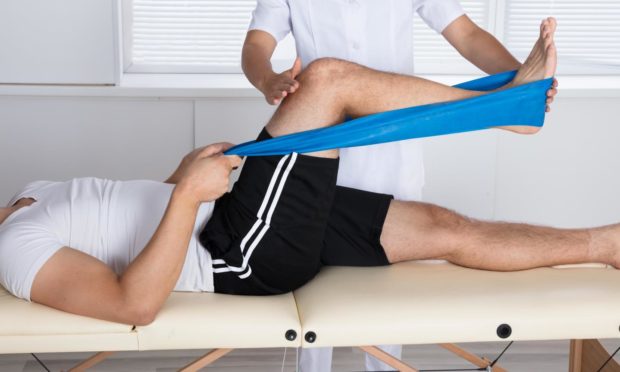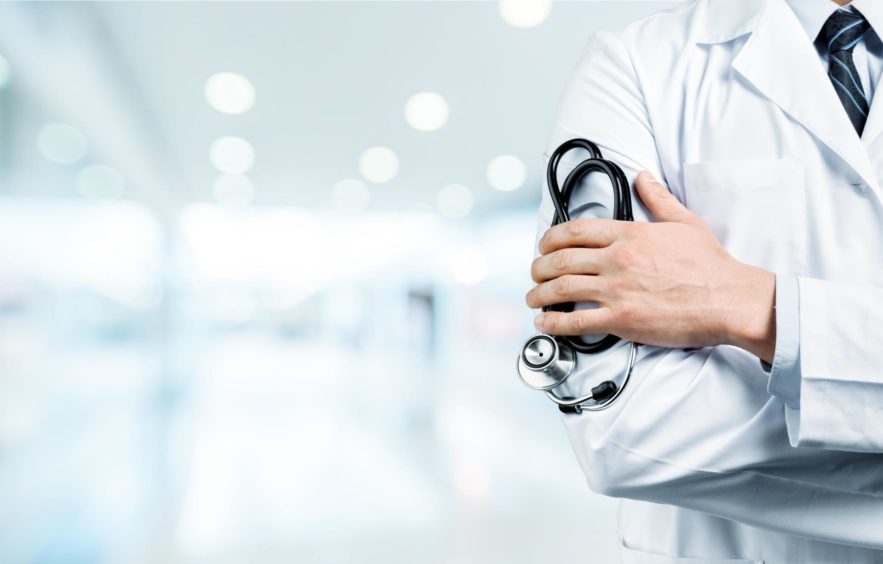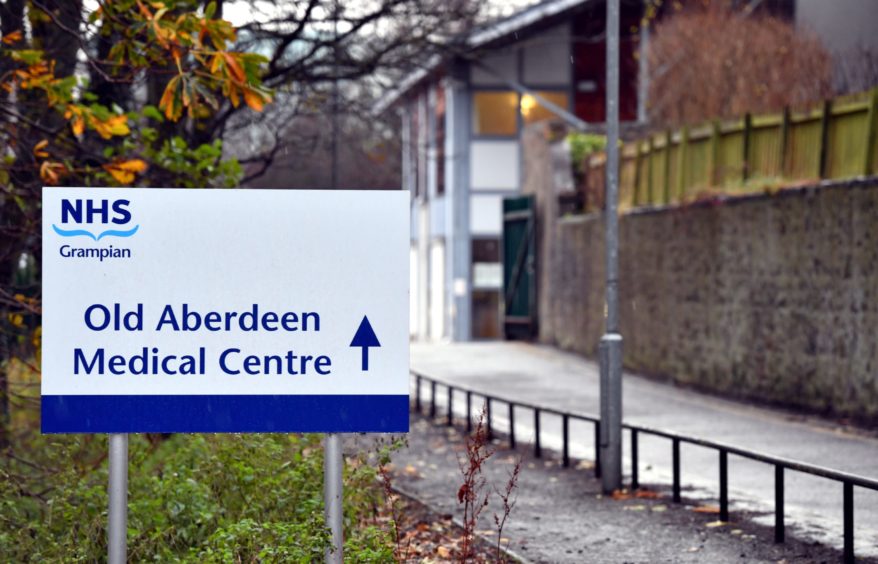My physiotherapy session with the NHS was going really well until I was asked to move up and down on one leg.
It’s not as easy as it sounds, especially as I was clutching a mobile phone to my ear. And trying to maintain a running commentary on my progress with a physiotherapist on the other end of the line, but sitting only a mile down the road.
I toppled about instead. Welcome to the new hands-off medical world.
On the face of it, telephone physiotherapy sounds an impossible concept, but we actually made progress.
I eventually discovered after an MRI scan that I had gluteal tendinopathy. Apparently my buttocks were leading a life of their own and relations with my thighs were strained.
I was mailed giant NHS rubber bands and a rigorous video exercise schedule that should make my tendons work in harmony again.
Waking up in pain every morning at three o’clock was already stretching me to the limit.
In-person appointments have become a luxury
Remote treatment suited me, but it’s not the best option for others.
For many, Covid-19 has forced drastic changes in how they connect with health professionals. But a possible post-pandemic return to traditional face-to-face GP consultations is a battleground.
Some health managers and practice bosses believe it’s more efficient and convenient to leave triage practices in place permanently, but for whom?
Many family doctors were ordered behind “barricades” at their practices to avoid pandemic onslaught. They operate an arm’s length triage system to sift patients, whose default position is contact by phone or email assessment.
An appointment in the flesh has become more of a luxury than the rule, and is at the discretion of GPs. Some health managers and practice bosses believe it’s more efficient and convenient to leave triage practices in place permanently, but for whom?
Other influential voices in the profession and those representing patients’ interests are appalled.
Remote consultations work – in theory
The new system is supposed to save practices time and money. It looks convincing on a balance sheet, but an imaginary daily profit and loss ledger would show a deficit of personal, non-digital contact.
We could permanently forfeit our right to an in-person appointment on demand, as we enjoyed in the past. It’s a fundamental shift in our relationship with family doctors; perhaps one of the biggest since the NHS began.
Seeing a doctor in person, in an intimate setting more conducive to opening your heart, can mean the difference between life and death.
Seeing doctors face to face can save lives
I remember a pre-pandemic interview with a senior GP in the north-east, who also trained medical students in Aberdeen.
It takes 10 years for GPs to qualify, but prevailing student medic opinion regards it as a less glamorous career than “24 hours in A&E”.
Family doctors pick up visual signals in person – indicating the likes of addiction, domestic abuse, self-harm or cancer – that they can’t via remote digital consultation
This GP often won over sceptical students by giving them a taste of crucial early warning work, only made possible by scrutinising patients face to face in practices. She was passionate about doctors developing intuitive detective skills to spot hidden conditions.
“A patient might turn up with three routine things which worry them, but a chance remark about something else sets alarm bells ringing,” I recall her telling me.
Family doctors also pick up visual signals in person – indicating the likes of addiction, domestic abuse, self-harm or cancer – that they can’t via remote digital consultation.
GPs are buckling under the weight of calls and emails
I hear rumblings of dissatisfaction in north-east practices forced into deeper triage by the pandemic. Some trainees say they didn’t sign up for a call centre job.
I am told some GPs are buckling under the weight of soaring patient emails under the new system. I understand that assessing up to 80 patient email requests a day single-handed is not unusual.
The new, easy access digital explosion means GPs can be bombarded by the same patients on a daily basis.
I was at a public meeting a couple of years ago when doctors discussed appointment waiting times. The crisis then was too many patients and not enough GPs; Covid restrictions made it worse.
But that past discussion offered an alternative solution to the current triage debate as well.
Patients might just have to accept even longer delays for appointments as the price for preserving an automatic right to face-to-face consultations.
It’s impossible to work blindfolded
Call the Midwife is a popular television drama where nurses and their resident GP doggedly uncover medical crises hiding away in every episode.
In the last episode, my wife and I watched a midwife worried about a pregnant woman’s poor housing conditions discover that the patient was actually suffering from a DIY abortion attempt.
The shocking storyline reflected not only the times, but also the kind of hands-on “detective” work in community medicine which remains essential today.
You cannot be an NHS gatekeeper in GP practice while wearing a blindfold for the most critical part of the job.
David Knight is the long-serving former deputy editor of The Press & Journal













